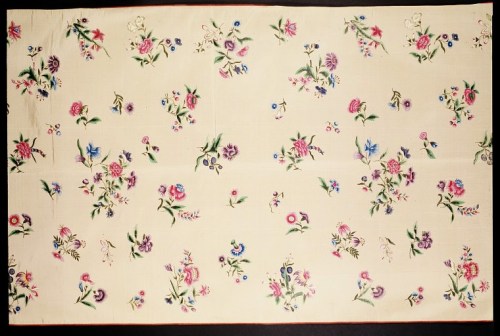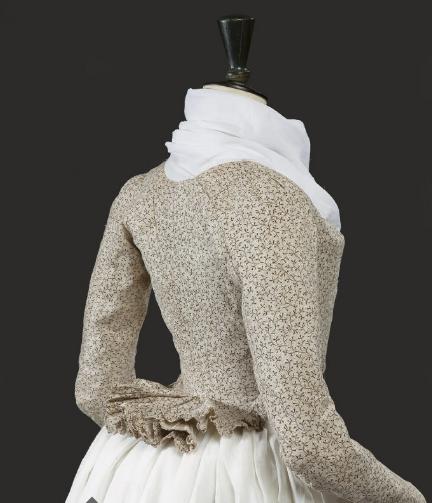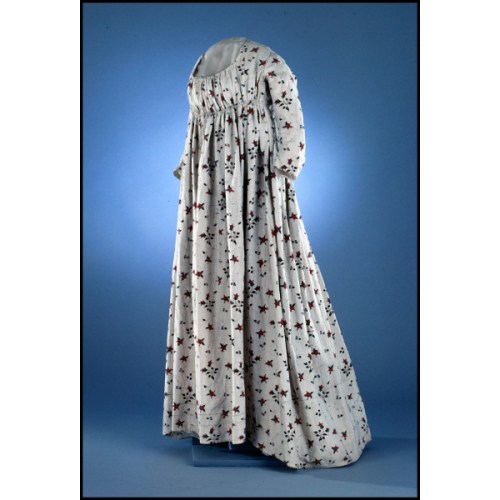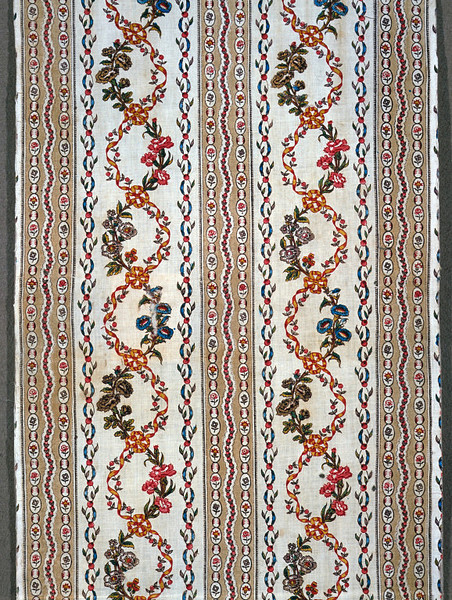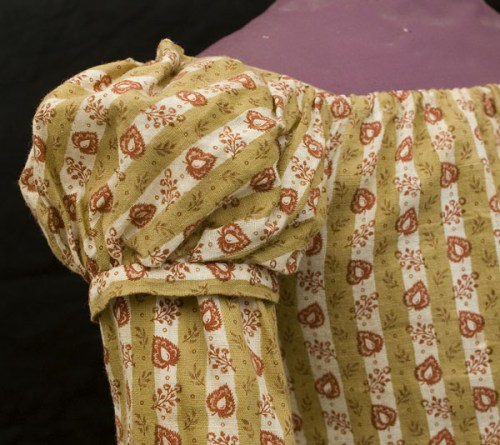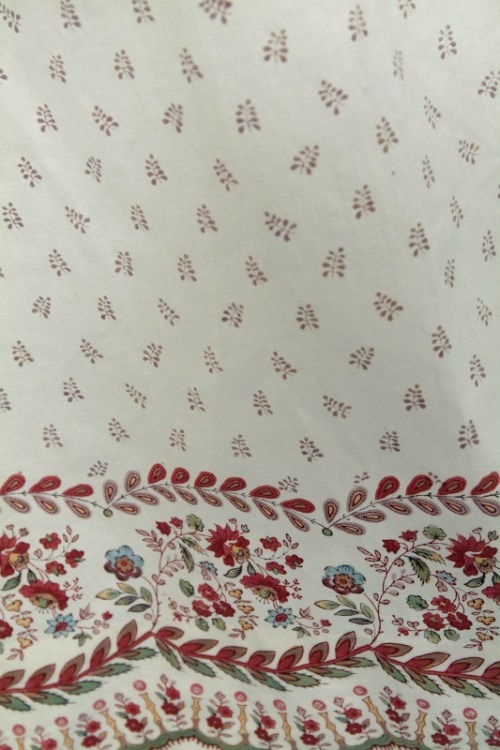We have come to associate delicate white muslin material woven in India with Regency fashion to such a degree that it is easy to forget that other colors and printed fabrics were also used, and that many silk and cotton dresses were made of fabrics with colorful patterns and distinctive designs, such as this 1820’s day dress, or this 1790 caraco printed jacket…
…or the lively Ackermann dress below.
Some of the fabrics were lavishly embroidered…
… or painted to produce a patterned effect.
But with the industrial revolution, printing and dying techniques began to be improved.
By the mid-eighteenth century, wood-block printing on cotton and linen textiles had developed to a high standard, even though the home market was affected by legislation protecting the silk and wool industries.” – *V&A
The dyeing techniques used to produce the strong fast colours on imported Indian chintzes which had dazzled European customers in the seventeenth century had been mastered, and colour ranges were developed further with the introduction of ‘pencilling’ of indigo in the 1730s, and ‘china blue’ by the early 1740s.” – *V&A
“A commentator on the state of British textile arts in 1756 wrote : “chintz…can imitate the richest silk brocades, with a great variety of beautiful colours. This length of block-printed cotton dress fabric is typical in its design and colouring of English production at the end of the 18th century.” – *Block Printed Cotton, Victoria & Albert Museum
Roller printing also became popular.
Roller printing, a mechanical improvement on the copperplate technique, was developed in England in the late eighteenth century and was in use in the north of England by 1790.” – **Met Museum
The copper roller gave manufacturers the ability to print larger quantities of fabrics at greater speeds, for lower prices, and the production of printed cotton increased dramatically in the nineteenth century.” – ** Source: Textile Production in Europe: Printed, 1600–1800 | Thematic Essay | Heilbrunn Timeline of Art History | The Metropolitan Museum of Art
- 1800 dress fabric, British. Image @Victoria & Albert Museum
More on the topic:
- Block Printed Cotton, The Encyclopedia Brittanica Dictionary of Arts and Sciences, 1888
- Pretty Prints, Clever Cottons: 18th century fabrics
- How the Fashion Obsessed Jane Austen Would Love What is Under My Christmas Tree
- Printed European Textiles: 18th Century
- Printed Cottons
- Calico Printing
- Toile de Jouy: A fabric with roots in the 18th century
- Textile Production in Europe: Printed 1600-1800
- Purchase facsimiles of 18th century cotton printed fabrics
